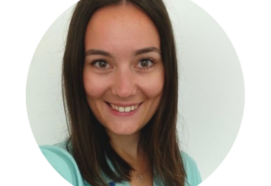Excessive mirror-checking, extensive make-up, and endless selfies — normal teenage behaviour or the hallmark of something more serious?
I spoke to Dr Bruce Clark, Consultant Child and Adolescent Psychiatrist and Dr Amita Jassi, Consultant Child and Adolescent Clinical Psychologist, both of whom work at the National and Specialist OCD, BDD and Related Disorder Service for Children and Young People at South London and Maudsley NHS Trust.
Body Dysmorphic Disorder is a mental health condition where a person worries about perceived flaws in their appearance — flaws that are unnoticeable to others, or else appear incredibly slight.
It affects people of any age but is most prevalent in teenagers and young adults, and although common, it frequently goes unrecognised or misdiagnosed.
Without help, a young person with Body Dysmorphic Disorder may be at risk of self-harm and suicidal ideation. In desperation, they may also resort to self-surgery.
Yet, as Bruce and Amita will explain, the condition is treatable with highly successful, evidence-based interventions. Sadly, many sufferers miss out due to a lack of awareness around BDD.
“In our clinics, we should see 50:50 between Obsessional Compulsive Disorder and BDD but we only see 15% with BDD. It’s equally as common but there are lots of barriers about getting people into services,” says Amita.
The barriers stem both from the young people themselves, who convinced their problems are physical rather than psychological, seek treatment via beauticians and surgeons; and from health professionals, who often misconstrue the young person’s difficulties as standard teenage fare, or else solely treat the person for social anxiety or depression.
“We are probably where OCD was about 10 years ago when people didn’t know much about it,” explains Amita. “Young people tell us how when they do make it to mental health services they are often misdiagnosed, with social anxiety or depression given as the diagnosis. In a study with a group of young people with eating disorders, over a third actually had BDD.”
Bruce Clark agrees. “It’ll be in your clinics already,” he says. “There are estimates that approximately 50% of people with BDD will make an attempt on their life some time during the length of their illness. That is such a stark statistic but due to the sense of shame that people with Body Dysmorphic Disorder experience they will not talk about those thoughts despite quite often being in front of mental health professionals. They will talk about other things — their low mood, but not necessarily talk about the core driver behind this body related, self-image related concern underpinning the difficulties. BDD drives a lot of distress and repetitive behaviours. In a lot of extreme cases we see — about one-third — engage in self-surgery in desperation to change their appearance. Lots of young people are spending hours on social media researching surgery, and comparing themselves. It is probably one of the most impairing conditions I have dealt with.”
Bruce and Amita are keen to raise awareness of BDD and to disseminate information about how the condition can be identified and treated.
Bruce says professionals should always have ‘a keen eye to think about BDD’, particularly when working with patients with self-harm, those who have taken overdoses, have depressed mood, and young people who start to use alcohol or other substances in a more dependent way.
“It’s actually really important in that group to start to more carefully screen to rule in or rule out BDD.”
So how might one screen for BDD?
Amita says it’s relatively simple. “For professionals, I would narrow it down to just three questions that map onto the diagnostic criteria.
- Do you spend an hour or more every day worrying about your appearance?
- Do you find yourself doing lots of behaviours such as mirror-checking, grooming, or comparing your appearance to others to try to cope with these worries?
- Do these appearance worries make you feel miserable, anxious, depressed or ashamed and are they getting in the way?
If a young person answers ‘yes’ to all three and it’s not just to do with weight and shape, it’s worth pursuing whether BDD accounts for the difficulties.”
Treatment for BDD is already described in the NICE guidance for Obsessive Compulsive Disorder. It encourages a Stepped Care Approach to guide the young person through primary care into specialist mental health provision, and then if interventions haven’t helped, onto highly specialist teams such as Bruce’s and Amita’s.
The condition is treated with Cognitive Behavioural approaches, often in tandem with medication. Both Bruce and Amita have carried out extensive research into the treatment of BDD and its outcomes.
“Cognitive Behavioural Therapy is the absolute backbone treatment for this condition,” says Bruce. “The evidence base for cognitive behavioural therapy is strong and growing. We were fortunate to be the first team in the world to assess and formally examine in a research trial the use of CBT in young people with BDD showing that it is a clearly efficacious treatment with a lasting, sustained impact. Over and above that, medications are a cornerstone of treatments as well but should be added in after psychological therapy has been talked about. That kind of stepped care approach is important.”
One of the most challenging aspects of working with BDD is helping the sufferer to shift from seeing their problem as physical to something that is psychological.
“Once we can get young people to consider — they don’t have to believe — an alternative perspective, then we are half way there in terms of getting them on board with the treatment,” says Amita.
At the ACAMH Twilight Meeting, Bruce and Amita will draw on their clinical experience and the evidence base, with the ultimate goal to increase knowledge of BDD, awareness and confidence amongst professionals who work with young people.
“BDD is common,” says Bruce. “It has a massive negative impact on people’s lives and development and there are good evidence-based treatments out there. I would really like people to engage with that and think about BDD in their everyday clinical practice.”



Discussion
I wonder about the overlap between body dysmorphic disorder and rapid onset gender dysphoria which has become increasingly common
Is there a strong correlation between having BDD and thinking that a person might be transgender?